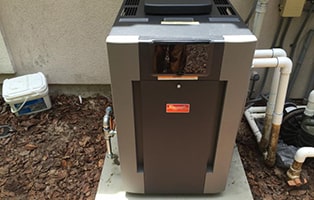If you want to know How to Heat a Pool, dive into our informative article!
If you’re like me, you can’t wait to jump into a nice refreshing pool when the sun’s inviting rays start to warm the earth in the early days of spring. However, pool water can be bone-chillingly cold during these months—even if the world is beginning to rouse from its long winter’s nap and preparing itself for summery weather.

Fortunately, you can decrease the time you’ll need to wait to swim by using one of the methods in this article. They’re all a fantastic way to get a jump start on swim season or extend it by a month or two in the fall.
Let’s dive in!
1. Solar Pool Covers

If you’re looking for a pool heating strategy that won’t bust the budget, start with one that harnesses the sun’s free energy. Solar pool covers (or solar blankets) fit the bill and are one of the most cost-effective ways to preserve precious pool heat. They consist of sheets of plastic that look a little like bubble wrap.
During the day and times when you’re not swimming, they suck up all the sun’s warmth. At night, they retain this heat by reducing evaporation, the cause of 75% of all pool heat loss. Using a solar blanket can reduce that deficit by up to a whopping 95%.
Solar covers come in two varieties: dark blue and clear. Dark blue ones are best for retaining the warmth you’ve generated using another method. If you have a gas- or electric-powered pool heater, your unit won’t need to run for nearly as long if you have a dark blue cover on your pool. Clear covers are better for letting the sun’s rays pass through so that heat can be trapped.
2. Solar Rings
Solar pool covers can be a real pain to install. They’re even more of a bother to remove when you want to take a nice, relaxing swim.

If you’re not ready for this hassle but still want to take advantage of solar-powered heating, consider solar rings. Solar rings, five-foot vinyl circles that work like pool blankets, generate up to 21,000 BTUs of heat energy a day.
However, instead of covering the entire pool, they float around while hooked together, absorbing the sun’s heat as they do so. If you want to ensure they don’t come apart, get the kind with magnets, which help keep the rings together.
Unlike solar covers, they don’t fit perfectly over a pool’s surface. This means that pool coverage will be incomplete, and gaps will exist. While they’re easier to install than pool covers, solar rings are more expensive than buying a single cover.
3. Liquid Pool Covers
A liquid solar pool cover is a fatty substance that creates an invisible barrier between the pool water and air, thereby slowing down evaporation. Swimming in a pool with one is perfectly safe because it doesn’t contain any harmful chemicals. Because it’s biodegradable, it’s also environmentally friendly.
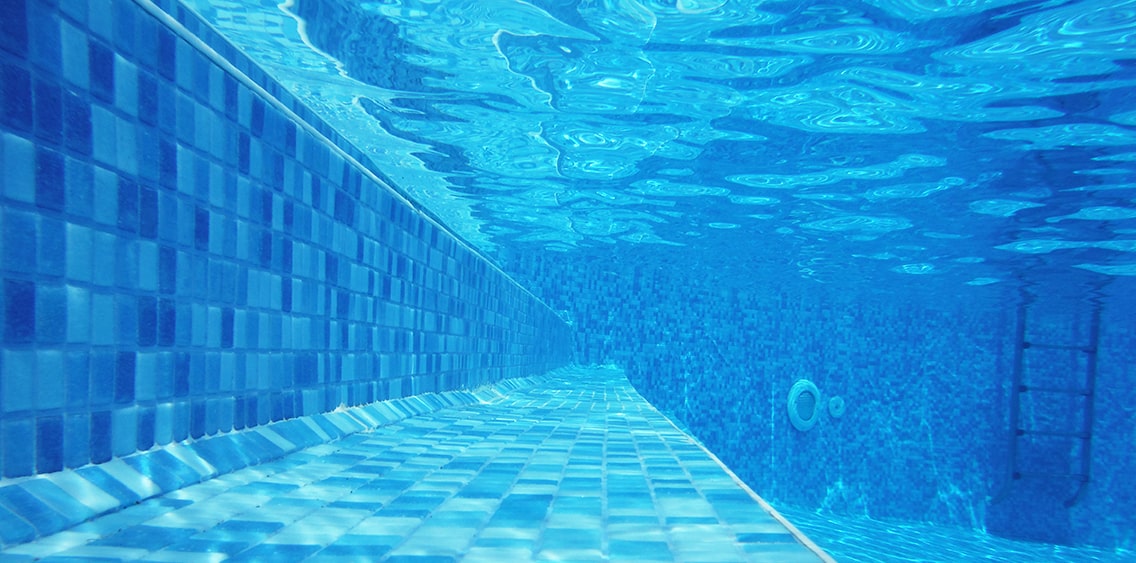
Liquid pool covers are easier to use than solar blankets. That’s because you’re merely dumping chemicals instead of removing a blanket whenever you want to take a refreshing dip.
However, liquid covers are 75 percent less effective at retaining heat than solid covers. They’re also not ideal in areas that get a lot of wind. That’s because this kind of meteorological activity creates choppy water, which compromises the chemical seal.
4. Gas Heaters
- COST: $1,500 to $6,000 (Initial Purchase Price)
- $200 to $400 (Monthly Expense for Natural Gas Models)
- $200 to $850 (Monthly Expense for Propane Models)
The fastest way to get pool water nice and hot is with a gas-powered heater. They work by pumping water through copper tubes into a combustion chamber where water gets heated over flames.
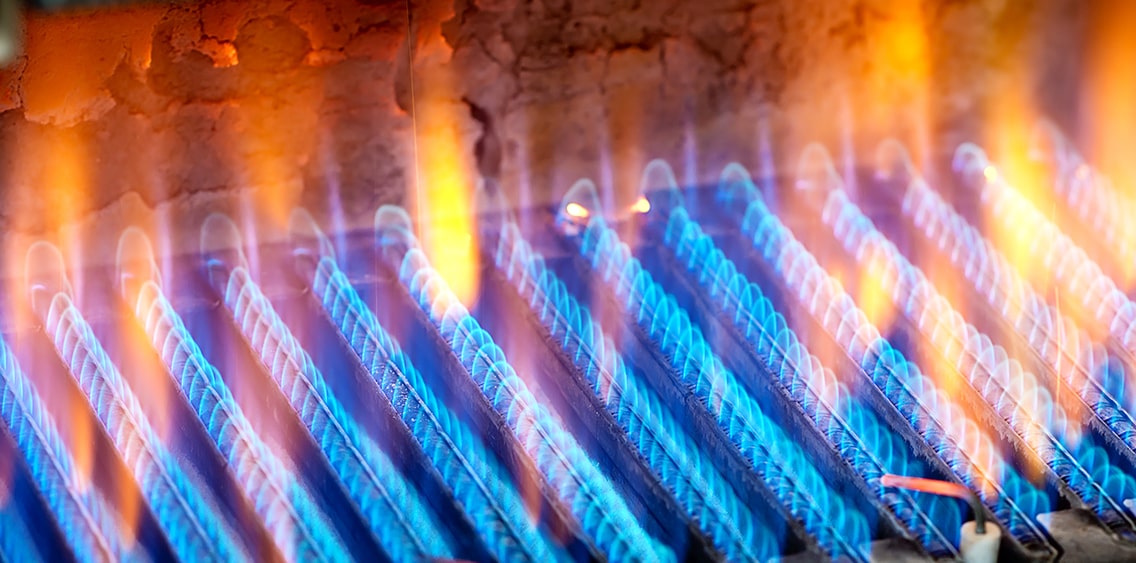
Gas pool heaters are powered by one of two types of fuel: natural gas or propane. Distribution companies deliver natural gas through pipes connected to a home, while propane-powered models get their energy via on-premises tanks.
While gas-powered pool heaters work quickly, they’re less cost-effective than heat pumps and solar-powered models. Because they’re fantastic at rapidly heating pools, they’re an excellent choice if you only use your pool sporadically.
5. Electric Heat Pumps
- COST: $1,800 to $5,400 (Initial Purchase Price)
- $100 – $200 (Monthly Cost)
Electric heat pump pool heaters work by extracting residual warmth from the air and using that heat to raise pool temperature. However, they only work if it’s warm enough—typically 40 degrees Fahrenheit or higher.
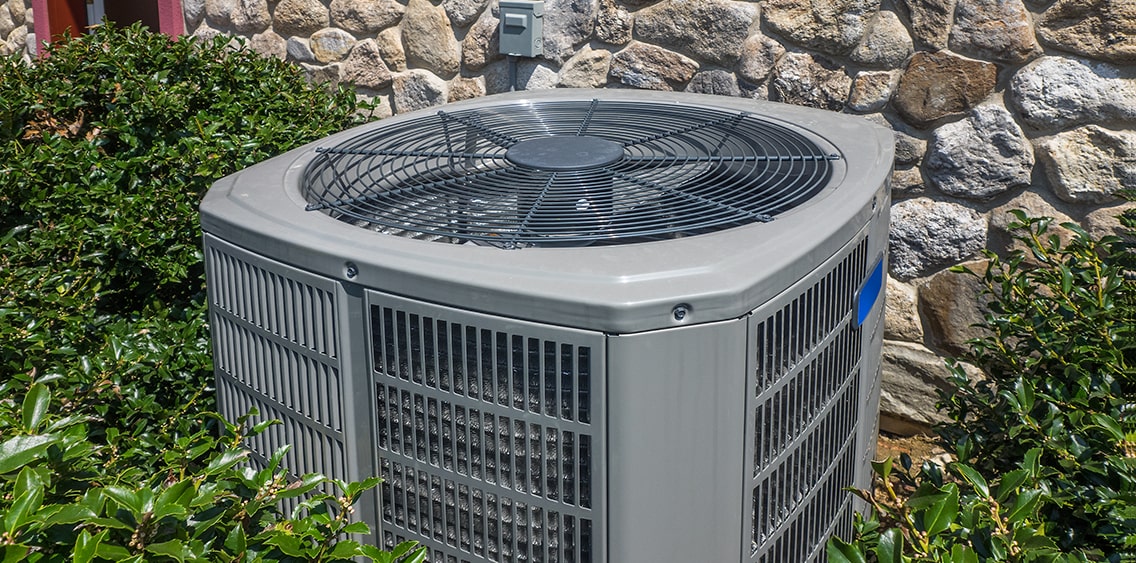
A heat pump takes approximately 24 to 72 hours to warm a pool by 20 degrees. They’re more expensive to buy than gas-powered heaters. However, ongoing costs are lower due to greater efficiency.
The only thing you’ll shell out money for is the cost of operating the compressor and fan motor, which allows you to harvest heat that’s nearly 100% free.
The heat pump process starts when a fan pulls warm air over an evaporator coil. This causes the liquid refrigerant inside to heat up, turning it into a gas. The gas flows through a compressor, which increases the temperature and pressure.
The gas exits the compressor and enters the condenser heat exchanger. Here, the heat is transferred to the pool water.
The gas reverts to a liquid state before leaving the condenser and flowing into a thermal expansion valve. This valve allows the refrigerant to expand, which decreases its temperature and pressure. Then, the cycle starts all over again.
6. Pool Enclosures
A pool enclosure is a structure that serves as a protective bubble, letting light in while keeping debris, rain, and wind out.

If you reside in an area of the planet where the wind howls like an out-of-control banshee, consider building one. That’s because when wind blows across pool water, tiny waves ripple across the top. This increases surface area, providing more opportunities for heat to escape.
A pool enclosure doesn’t only protect against wind—it allows you to swim year-round since you can keep the entire area nice and toasty. Plus, you’ll have loads of fun splashing around with zero chance of getting cancer from the sun’s blistering rays.
Your pool will last longer because UV radiation tends to deteriorate the materials pools are built from. If you don’t want to plunk down cash for a full-fledged enclosure, consider installing a lower-cost wind barrier, such as strategically placed trees or a tall fence.
7. Electric Resistance Heaters
- COST: $700 to $5,000 (Initial Purchase Price)
- $175 to $600 (Monthly Operational Cost)
Have you ever peered inside a toaster while waiting for your toast to pop up and watched as the metal coils got red hot? That’s what happens with electric resistance heaters.
Like electric appliances that heat up, they use coils to generate heat. Only instead of cooking a Pop Tart, they heat pool water. Because they can be expensive to run, they’re best for above-ground pools, hot tubs, or indoor pools in areas where the cost of electricity is low.
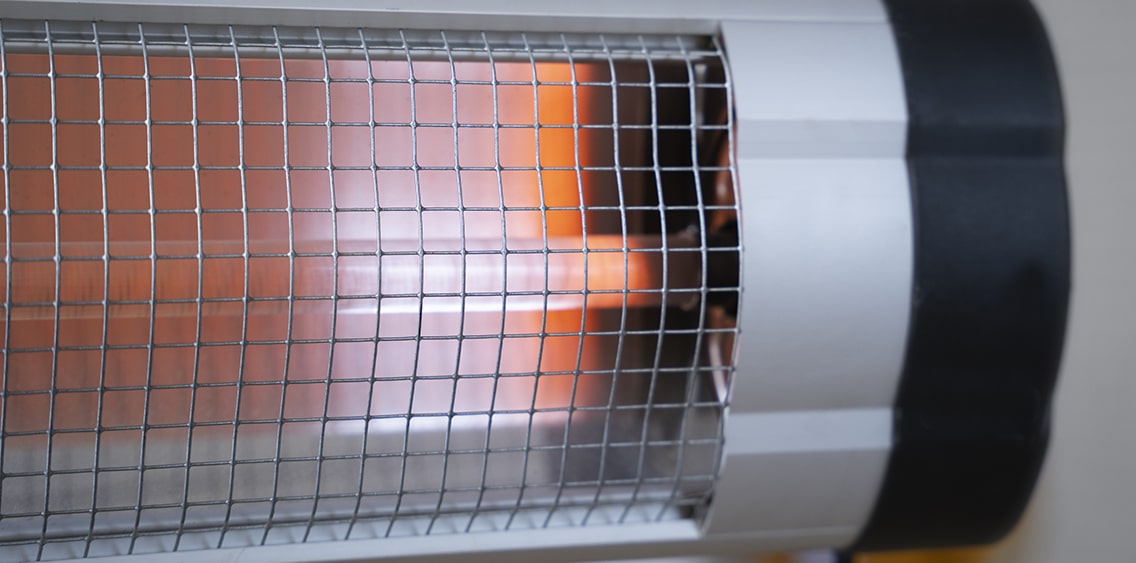
What’s great about them is that they don’t take up much space compared to other heaters, and they’re less complicated to install. Most of them can be erected outdoors or in a shed where ventilation is minimal because they don’t need to be vented to the outdoors.
8. The Black Hose Hack
The black hose hack allows you to use the sun’s plentiful energy to heat your pool cheaply and easily. If you want to try this clever trick, buy a black garden hose and connect one end to an outside water spigot. Connect the other end to your pump’s return port.
Run the hose to the top of your roof or any other place where it’ll get plenty of sunlight. Coil it tightly to boost its ability to retain heat. As the blackness of the hose absorbs the sun’s warmth, it’ll heat the water flowing through it.
Final Thoughts
As you can see, there are several ways to heat your pool. By doing so, you’ll be swimming earlier in the year, later in the season, and enjoying your daily dips so much more.
That’s because, instead of hopping into a pool as chilly as a Siberian lake in the dead of winter, you’ll feel a pleasant warmth permeating every part of your being. And in these days of off-the-charts stress where pleasures are fleeting, don’t you deserve to pamper yourself?
Keeping your pool at a nice, toasty temperature is a terrific way to do just that! For the best-rated pool heaters, check out our in-depth guide.

Pool Maintenance Tips & Tricks


